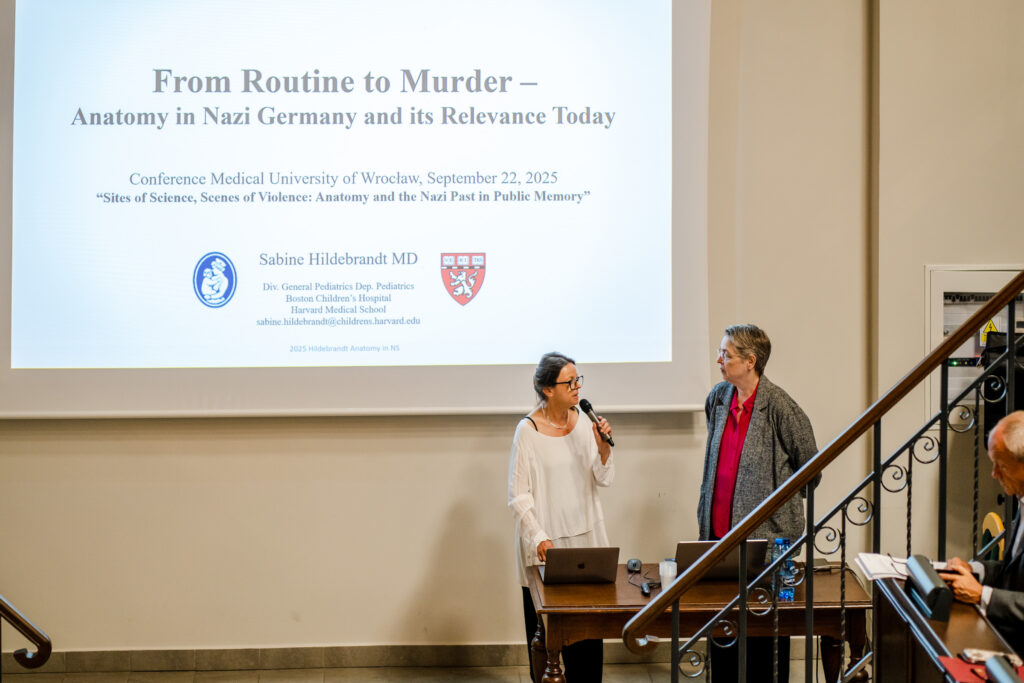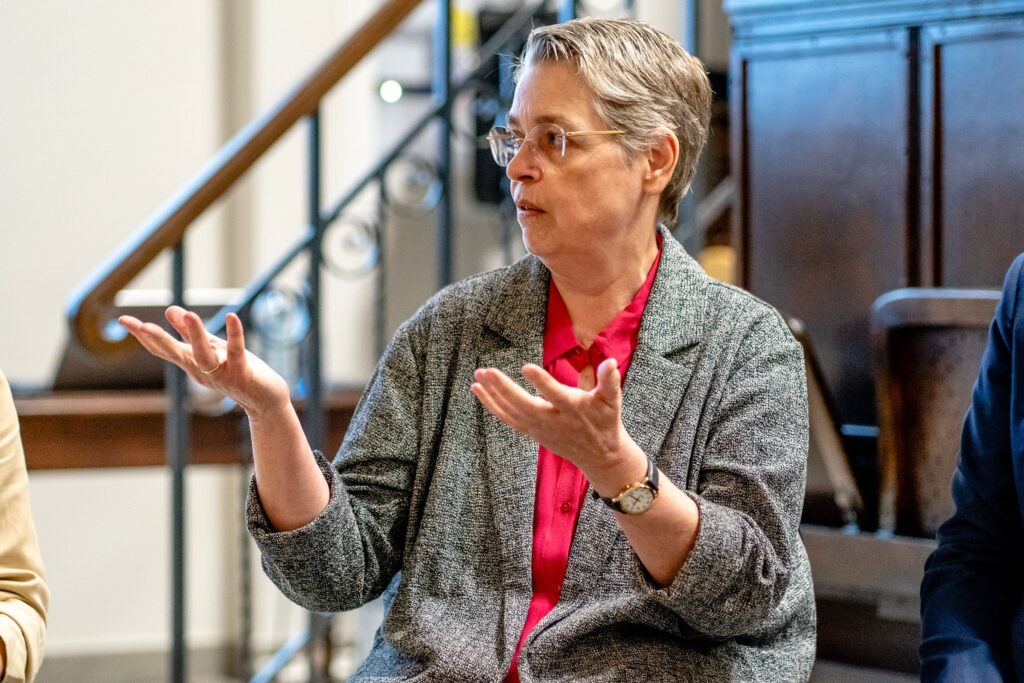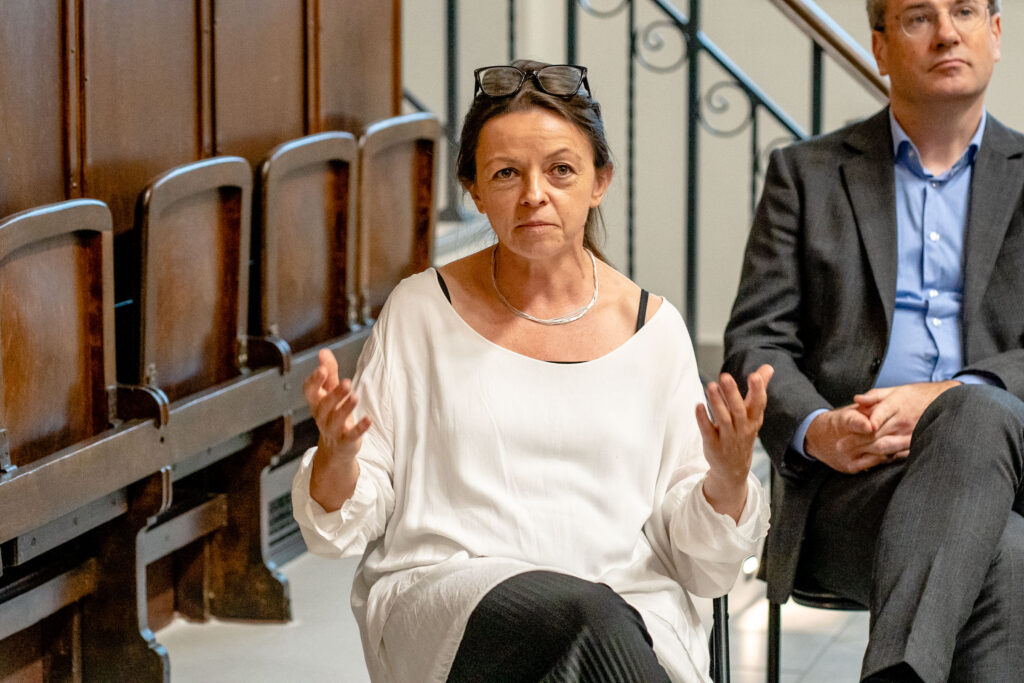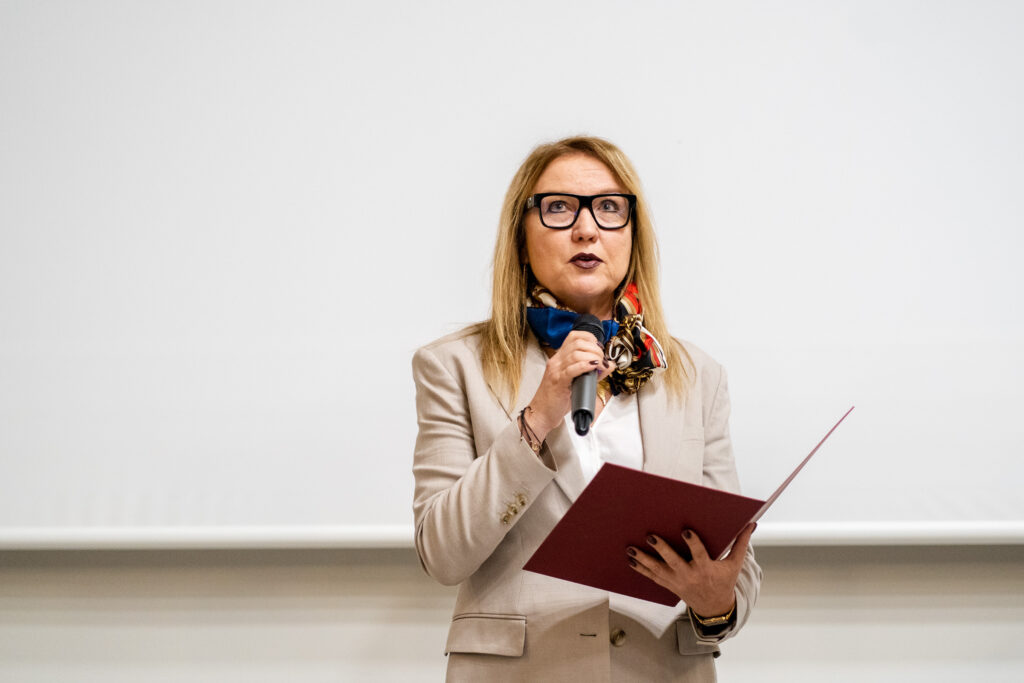On September 22, 2025, Wroclaw Medical University hosted the international session “Sites of Science, Scenes of Violence: Anatomy and the Nazi Past in Public Memory.” The meeting, held in the Department of Anatomy, was part of the University’s 75th anniversary celebrations under the motto “Past – Present – Future.” It combined keynote lectures with a roundtable discussion, creating space both for scholarly presentations and for an open dialogue on one of the darkest chapters of medical history.

The session was organized by the Department of Humanities and Social Sciences in Medicine together with the Division of Anatomy. It featured lectures by Prof. Sabine Hildebrandt (From Routine to Murder – Anatomy in Nazi Germany and its Relevance Today), Professor Herwig Czech (Victims on the Dissection Table: Anatomy in Innsbruck, Graz and Vienna during the Nazi Regime), and Dr Kamila Uzarczyk (‘Leiche – zur Anatomie’. From Guillotine to the Dissection Table/Anatomical Institute in Breslau). The program also included a guided tour of the Museum of Anatomy and the presentation of the Lancet Commission on Medicine, Nazism and the Holocaust by Prof. Hildebrandt.

During the roundtable discussion, participants engaged in a vivid exchange of perspectives. “Medicine at that time was deeply entangled in ideology. These were not marginal episodes but a systemic process, in which universities, institutes, and thousands of doctors participated,” stressed Prof. Hildebrandt. “Anatomy — a science that should serve the knowledge of the human body — became a tool of violence. That is why, today, students must not only learn anatomy, but also the responsibility that goes with it. Otherwise, medicine may again become an instrument of dehumanization.”

In a personal reflection, Dr Kamila Uzarczyk explained how she first encountered the subject as a student:
“One day, while going through an old card catalog, I came across a book about the extermination of the mentally ill during the Third Reich. I thought: how is it possible that throughout my studies nobody mentioned this? That was the beginning. Later I realized that even anatomy was not innocent — many anatomists actively cooperated with the regime. That discovery led me to stay in this field and try to complete the picture with my own research.”

Prof. Herwig Czech addressed the moral dilemmas raised by Eduard Pernkopf’s famous anatomical atlas. “By the end of the 1990s, a commission at the University of Vienna determined that specimens used to create the atlas most likely came from victims of the Nazi regime. The anatomical institute in Vienna alone received the bodies of at least 1,377 executed individuals. So while the atlas was praised as a masterpiece of medical illustration, it was inseparably linked to atrocities. The ethical and moral dilemma of whether this work can be used remains unresolved.”
The panelists also debated how institutions should handle remaining specimens. Professor Sabine Hildebrandt suggested:
“Human remains should be laid to rest with dignity. Yet perhaps one small slide could be kept as a physical witness — something tangible for students who otherwise live in a digital world. A physical witness to a history so outrageous has a value that mere words or digital images cannot convey.”
Prof. Czech, however, insisted on a different emphasis:
“The goal must always be to identify the victims, restore their names and stories, and acknowledge them as individuals. In Vienna, a project carried out in 2003 tried to trace every single child victim whose brain specimens had been preserved. It is time-consuming and often impossible, but anything less than this effort is difficult to defend. We must ensure victims are never reduced to anonymous research material.”

The Rector of Wroclaw Medical University, Prof. Piotr Ponikowski, underlined the importance of this initiative:
“This is the right moment to confront the German past of Wroclaw. We know that our Anatomical Museum contains specimens from the Breslau period. We have matured enough to verify these collections and, if necessary, to restore justice, identity, and dignity to the victims of the totalitarian system.”

The session ended with closing remarks by the Rector, Vice-Rector Prof. Marzena Dominiak, and Prof. Bartosz Kempisty, Head of the Division of Anatomy. The event combined academic rigor with ethical urgency, reminding participants that confronting the past is not only a scholarly task but also a moral responsibility.
Photo: Tomasz Modrzejewski